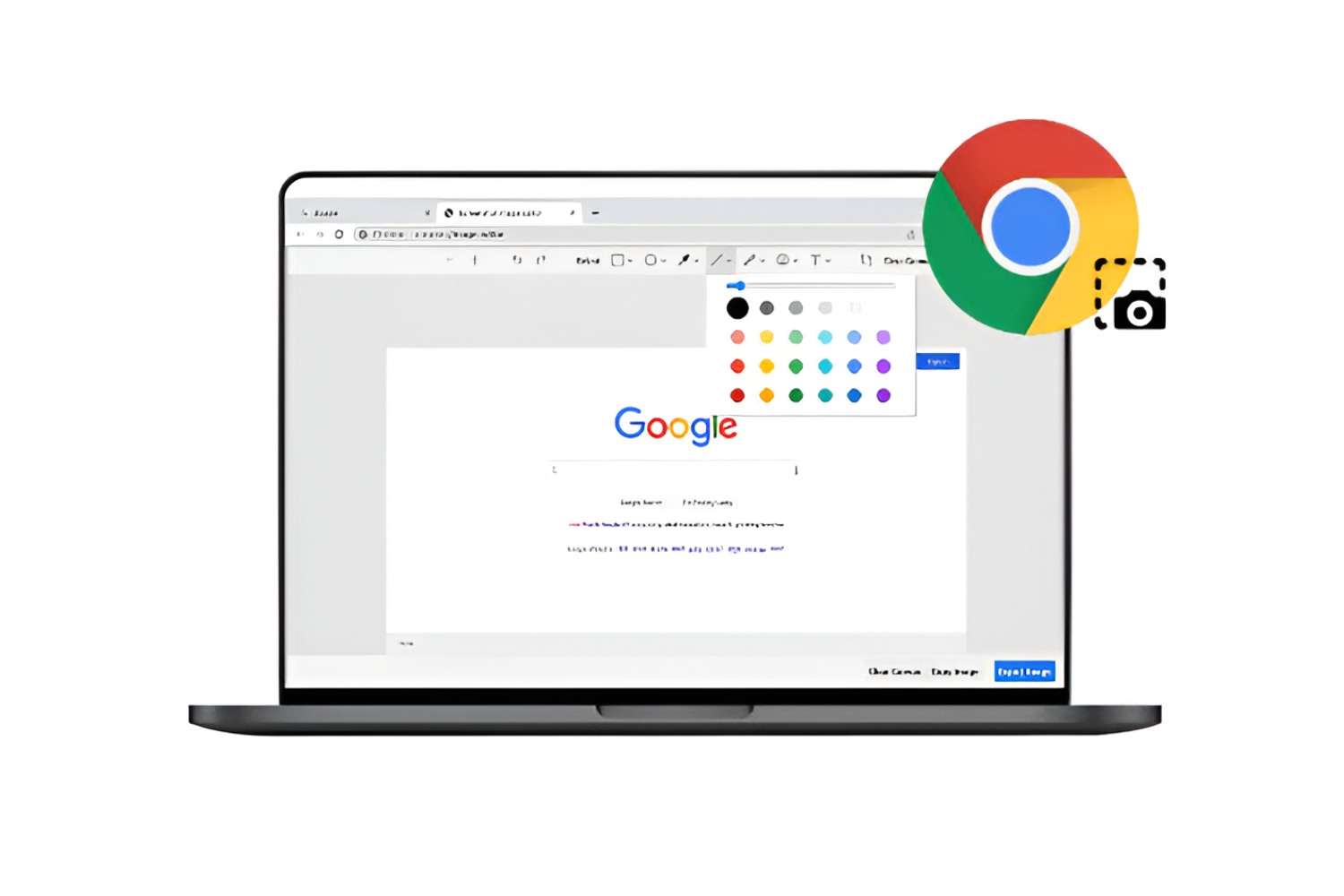Introduction
Chrome Native Client, often abbreviated as NaCl, is a groundbreaking technology that allows developers to build web applications with native code performance. This innovative solution enables running native code in a safe and secure manner within the Chrome browser, opening up a world of possibilities for creating high-performance web applications.
Chrome Native Client serves as a bridge between web technologies and native code, empowering developers to leverage the performance benefits of native applications while harnessing the reach and accessibility of web applications. By seamlessly integrating native code into web applications, NaCl offers a compelling solution for enhancing the performance and capabilities of web-based software.
This technology has garnered significant attention and acclaim within the developer community due to its potential to revolutionize web application development. With Chrome Native Client, developers can push the boundaries of what is achievable within web applications, delivering a more immersive and responsive user experience.
As we delve deeper into the intricacies of Chrome Native Client, we will explore its history, functionality, advantages, disadvantages, and real-world applications. By gaining a comprehensive understanding of this innovative technology, developers and enthusiasts can harness its potential to create powerful and efficient web applications.
History of Chrome Native Client
The history of Chrome Native Client traces back to its initial release in 2011, when Google introduced this groundbreaking technology as a means to bridge the gap between web applications and native code. The primary objective was to enable web developers to harness the power of native code while maintaining the security and portability of web applications.
The concept of running native code within a web browser was a significant departure from traditional web development practices, which primarily relied on interpreted languages such as JavaScript. With the introduction of Chrome Native Client, developers gained the ability to execute compiled native code within the browser environment, unlocking a new realm of possibilities for web application performance and functionality.
The development of Chrome Native Client was underpinned by Google's commitment to advancing web technologies and empowering developers to create richer, more immersive web experiences. By providing a secure and efficient mechanism for running native code within the browser, NaCl aimed to address the performance limitations often associated with web applications, particularly in areas such as gaming, multimedia, and computational tasks.
Over the years, Chrome Native Client has undergone significant evolution and refinement, with Google continually enhancing its capabilities and security features. The technology has garnered widespread interest and adoption within the developer community, leading to the creation of diverse applications that leverage its performance benefits.
Notably, the evolution of Chrome Native Client has been closely aligned with the broader advancements in web standards and browser capabilities. As web technologies have evolved to support increasingly complex applications, Chrome Native Client has continued to adapt and provide a robust solution for integrating native code into web environments.
The history of Chrome Native Client stands as a testament to the ongoing pursuit of innovation in web development, demonstrating the potential to push the boundaries of what is achievable within web applications. As we explore the functionality and applications of Chrome Native Client, it becomes evident that its history has laid the foundation for a new era of high-performance web applications that seamlessly integrate native code.
The evolution of Chrome Native Client reflects a pivotal shift in web development paradigms, empowering developers to create web applications with unprecedented performance and capabilities. This historical journey sets the stage for a deeper exploration of the functionality and real-world applications of Chrome Native Client, shedding light on its transformative potential within the realm of web development.
How Chrome Native Client Works
Chrome Native Client operates by leveraging a sandboxing mechanism to execute native code within the browser environment while ensuring robust security and performance. At its core, NaCl employs a combination of compiler technology and secure sandboxing to enable the seamless integration of native code into web applications.
When a web application incorporates Chrome Native Client, the native code is compiled into a special executable format known as a Native Client module. This compilation process ensures that the native code is compatible with the NaCl runtime environment and adheres to stringent security requirements. The resulting Native Client module is then embedded within the web application, allowing it to be executed directly within the browser.
Upon execution, the Native Client module is loaded into a secure sandbox within the Chrome browser. This sandboxing mechanism isolates the native code from the underlying system, preventing it from accessing sensitive resources or compromising the stability of the browser. By confining the execution of native code within a controlled environment, Chrome Native Client mitigates potential security risks and ensures a safe browsing experience for users.
Furthermore, Chrome Native Client incorporates a validation process that verifies the integrity and safety of Native Client modules before they are executed. This validation mechanism, coupled with the sandboxing environment, provides a robust defense against potential security vulnerabilities, making it a reliable platform for running native code within web applications.
In terms of functionality, Chrome Native Client seamlessly integrates with web technologies such as HTML, JavaScript, and WebGL, enabling web developers to leverage the performance benefits of native code while maintaining compatibility with standard web standards. This integration allows for the creation of web applications that harness the computational power and responsiveness of native code, enhancing the overall user experience.
By understanding the inner workings of Chrome Native Client, developers can appreciate the intricate balance between security, performance, and compatibility that underpins its functionality. This insight empowers developers to harness the capabilities of native code within web applications while upholding the essential principles of web security and portability.
The seamless integration of native code into web applications through Chrome Native Client represents a significant advancement in web development, offering a compelling solution for enhancing the performance and functionality of web-based software. As we delve into the advantages and disadvantages of Chrome Native Client, it becomes evident that its underlying mechanisms play a pivotal role in shaping the landscape of modern web application development.
Advantages of Chrome Native Client
Chrome Native Client offers a myriad of advantages that significantly elevate the capabilities and performance of web applications. These advantages underscore the transformative potential of integrating native code into web environments, empowering developers to create immersive and responsive experiences for users.
1. Native Code Performance
One of the primary advantages of Chrome Native Client is its ability to harness the performance benefits of native code within the browser environment. By seamlessly integrating compiled native code into web applications, NaCl enables developers to unlock the full computational power of the underlying hardware, resulting in enhanced performance for tasks such as gaming, multimedia processing, and complex computational algorithms.
2. Security and Sandboxing
Chrome Native Client incorporates robust sandboxing mechanisms that isolate the execution of native code within a secure environment. This ensures that the native code cannot compromise the integrity of the browser or access sensitive system resources. The stringent validation process further enhances security, making NaCl a reliable platform for running native code without sacrificing the safety of the browsing experience.
3. Compatibility with Web Technologies
Another notable advantage of Chrome Native Client is its seamless integration with standard web technologies such as HTML, JavaScript, and WebGL. This compatibility allows developers to leverage the performance benefits of native code while maintaining interoperability with existing web standards. As a result, web applications can seamlessly incorporate native code functionality without sacrificing compatibility or portability.
4. High-Performance Applications
With Chrome Native Client, developers can create high-performance web applications that rival traditional native software in terms of responsiveness and computational capabilities. This advantage is particularly significant for applications that demand real-time processing, complex simulations, or immersive multimedia experiences, as NaCl empowers developers to push the boundaries of what is achievable within web environments.
5. Versatility and Innovation
The versatility of Chrome Native Client opens up new avenues for innovation in web application development. Developers can explore novel use cases and create experiences that were previously limited by the performance constraints of traditional web technologies. This versatility fuels innovation and paves the way for a new generation of web applications that blur the line between web and native software.
In essence, the advantages of Chrome Native Client underscore its potential to revolutionize web application development, offering a compelling solution for creating high-performance, secure, and innovative experiences within the browser environment. As we explore the real-world applications of Chrome Native Client, these advantages serve as a testament to its transformative impact on the landscape of web development.
Disadvantages of Chrome Native Client
While Chrome Native Client (NaCl) presents compelling advantages for web application development, it is important to acknowledge the potential drawbacks and limitations associated with this technology. Understanding the disadvantages of Chrome Native Client provides a balanced perspective on its suitability for various development scenarios.
-
Limited Browser Support:
Chrome Native Client is primarily designed for the Google Chrome browser, which may limit its accessibility across different web environments. While efforts have been made to support other browsers, the full potential of NaCl may not be realized in non-Chrome environments, potentially restricting its adoption for cross-platform applications. -
Development Complexity:
Integrating native code into web applications through Chrome Native Client introduces a level of complexity in the development process. Developers need to navigate the intricacies of compiling and integrating native code, which may require additional expertise and resources. This complexity can pose challenges for teams with limited experience in native code development. -
Deployment and Distribution:
Distributing web applications that incorporate Chrome Native Client modules may present logistical challenges. Ensuring that end users have the necessary runtime environment to execute Native Client modules can add complexity to the deployment process. This requirement for additional runtime support may impact the seamless distribution of web applications across diverse user environments. -
Security Considerations:
While Chrome Native Client incorporates robust sandboxing mechanisms, the execution of native code within the browser environment introduces potential security considerations. As with any technology that integrates native code, there is a need for vigilant security practices to mitigate the risk of vulnerabilities or exploits that could compromise the integrity of the browser and user data. -
Performance Overhead:
While Chrome Native Client offers native code performance within the browser, there may be inherent performance overhead associated with the sandboxing and validation mechanisms. This overhead could impact the overall performance gains achieved through native code integration, particularly for applications with stringent performance requirements.
Acknowledging these disadvantages provides valuable insights for developers evaluating the suitability of Chrome Native Client for their projects. By weighing the advantages and disadvantages, developers can make informed decisions regarding the adoption of NaCl for web application development, considering factors such as browser compatibility, development complexity, deployment considerations, security implications, and performance trade-offs.
Use Cases of Chrome Native Client
Chrome Native Client (NaCl) presents a diverse range of compelling use cases that demonstrate its transformative potential in web application development. By seamlessly integrating native code into web environments, NaCl enables developers to create high-performance, secure, and innovative experiences that push the boundaries of traditional web applications.
1. High-Performance Web Games and Multimedia Applications
One of the prominent use cases of Chrome Native Client is in the development of high-performance web games and multimedia applications. By leveraging the native code performance capabilities of NaCl, developers can create immersive gaming experiences, real-time simulations, and multimedia-rich applications that rival traditional native software. The seamless integration of native code within the browser environment empowers developers to deliver responsive and visually stunning web experiences, opening up new possibilities for interactive and engaging content.
2. Computational and Data-Intensive Applications
Chrome Native Client finds extensive use in computational and data-intensive applications that demand robust performance and real-time processing capabilities. From scientific simulations and data visualization tools to complex computational algorithms, NaCl enables developers to harness the full computational power of native code within web applications. This use case is particularly valuable for applications that require rapid data processing, complex calculations, and real-time analysis, showcasing the versatility of NaCl in addressing diverse computational challenges within web environments.
3. Interactive Web Applications with Native Code Functionality
Developers can utilize Chrome Native Client to create interactive web applications that seamlessly integrate native code functionality. Whether it involves real-time audio processing, advanced graphics rendering, or hardware-accelerated tasks, NaCl empowers developers to enhance the interactivity and responsiveness of web applications. This use case enables the creation of innovative web experiences that blur the line between web and native software, offering users a seamless and immersive interaction with web-based content.
4. Cross-Platform Applications with Native Performance
NaCl facilitates the development of cross-platform web applications that deliver native code performance across diverse user environments. By leveraging the capabilities of Chrome Native Client, developers can create web applications that maintain consistent performance and functionality, regardless of the underlying operating system or device. This use case underscores the potential of NaCl to bridge the performance gap between web and native applications, offering a compelling solution for delivering high-performance experiences across varied platforms.
5. Real-Time Collaboration and Communication Tools
The integration of Chrome Native Client enables the development of real-time collaboration and communication tools within web applications. By harnessing the performance benefits of native code, developers can create interactive and responsive communication platforms, collaborative workspaces, and real-time data sharing applications. This use case showcases the potential of NaCl to elevate the capabilities of web-based collaboration tools, providing users with seamless and efficient communication experiences.
In essence, the use cases of Chrome Native Client exemplify its versatility and transformative impact on web application development. By empowering developers to harness native code performance within the browser environment, NaCl opens up new frontiers for creating high-performance, secure, and innovative web experiences across diverse domains and application scenarios.
Conclusion
In conclusion, Chrome Native Client (NaCl) stands as a pioneering technology that has redefined the landscape of web application development. By seamlessly integrating native code into web environments, NaCl empowers developers to create high-performance, secure, and innovative experiences that push the boundaries of traditional web applications. The journey through the history, functionality, advantages, disadvantages, and real-world applications of Chrome Native Client has shed light on its transformative potential and the diverse opportunities it presents for web developers.
The evolution of Chrome Native Client, from its inception to its current capabilities, reflects a pivotal shift in web development paradigms. The technology's ability to bridge the gap between web technologies and native code has unlocked new avenues for creating immersive and responsive web experiences. The advantages of NaCl, including native code performance, security and sandboxing, compatibility with web technologies, and versatility, underscore its potential to revolutionize web application development.
However, it is essential to consider the potential drawbacks and limitations associated with Chrome Native Client, such as limited browser support, development complexity, deployment considerations, security implications, and performance overhead. Understanding these aspects provides valuable insights for developers evaluating the suitability of NaCl for their projects, enabling informed decision-making and strategic planning.
The use cases of Chrome Native Client exemplify its versatility and transformative impact on web application development. From high-performance web games and multimedia applications to computational and data-intensive tasks, interactive web applications, cross-platform experiences, and real-time collaboration tools, NaCl has demonstrated its ability to address diverse application scenarios with native code performance.
As the web development landscape continues to evolve, Chrome Native Client remains a compelling solution for developers seeking to enhance the performance and capabilities of web applications. Its seamless integration with web technologies, coupled with robust security measures, positions NaCl as a catalyst for innovation and creativity in web development.
In essence, Chrome Native Client represents a paradigm shift in web application development, offering a compelling solution for creating high-performance, secure, and innovative experiences within the browser environment. As developers continue to explore the potential of NaCl in diverse domains, its impact on the future of web applications is poised to be profound, driving the creation of immersive and responsive experiences that redefine the boundaries of web development.

























